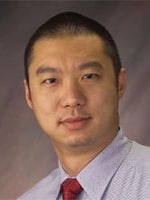Pathology website free of constraints that hinder others
February 2023—Magic, joy, wisdom, and goats. Words seldom—if ever—used together in describing a pathology-focused website. Until now.
Since its launch in 2019, the platform—called Knowledge In Knowledge Out, or KiKo (www.kikoxp.com)—has attracted more than 14,000 physicians, about 90 percent of whom are pathologists. The goal is to provide a place for doctors to share their clinical experiences and network with each other in a professional online environment, says Jonhan Ho, MD, who is founder and CEO of KiKo and director of the dermatopathology division and fellowship director at the University of Pittsburgh Medical Center.
KiKo is designed to give physicians more control over their professional profiles than they typically have in their institutional settings, Dr. Ho explains. Many pathologists have a profile page on their hospital’s website, for example, but employers often control the format and content of that profile. On KiKo, member pathologists can customize their profiles with videos, slides, personal information about their hobbies and interests, and even whole slide images. For pathologists who don’t have access to whole slide imaging, Dr. Ho adds, KiKo offers a whole slide image scanning service to which pathologists can submit their slides for a small fee that covers associated costs.
On his profile page, Dr. Ho has his curriculum vitae, links to journal articles he has authored, and a digital version of a poster he presented at a pathology conference. He also has a variety of medical and technology-related posts and pictures of his family and goats. “We want you to feel like this is you in a way the CV can’t express,” he says. “This is kind of my next-generation CV.”

Dr. Ho
KiKo membership is available only to physicians and is free. (The site is funded by advertising.) To facilitate professional networking, member profile pages include links to lists of followers, members’ coauthors on journal articles, and physicians that members have trained.
While Dr. Ho manages KiKo as its CEO, he built the site with cofounders David Lapham, KiKo’s lead developer, and Jerad Gardner, MD, dermatopathologist and section head of bone/soft tissue pathology at Geisinger Medical Center, Danville, Pa. Dr. Gardner, a frequent social media-focused conference speaker, initially joined KiKo as a consultant to provide guidance on social media features useful to physicians. However, Dr. Ho found Dr. Gardner’s contributions to the site so valuable that he named him a cofounder of the platform. Dr. Gardner also serves as chair of KiKo’s medical advisory board.For Dr. Gardner, an important priority was ensuring that KiKo avoid the constraints on file size and file format that encumber other social media platforms, he says. YouTube, for example, only allows videos; Instagram has pictures and short videos; and Twitter allows pictures and short texts or videos with a size limit.
“On KiKo, you can post long videos, short videos, single images, groups of 25 images, whole slide digital images, and you can post text that is short, like a Tweet, or as long as a white paper,” Dr. Gardner says.
The ability to accommodate numerous types of files is particularly valuable for physicians who want to share long instructional videos or in-depth research, he notes. Dr. Gardner, himself, used KiKo to build libraries of his past content that he calls “mega indexes” because they contain all of his video lectures, board review courses, digital slides, pictures, and sample pathology reports. Dr. Gardner created one index for dermatopathology and another for bone and soft tissue pathology. Physicians can use the indexes to search all of his content by topic, such as by disease name.
The indexes have not only helped Dr. Gardner organize his content but have drawn people to KiKo. For example, he often uses other social media platforms, such as Twitter, to post pathology images, with a request that viewers try to identify the images. The Tweets include KiKo links to whole slide images and in-depth explanations of the photos. Readers of the Tweets can click the KiKo links for more information and to verify whether they interpreted the images correctly. Linking to KiKo for these quiz-style posts works well because of the site’s ability to handle whole slide images and files containing in-depth information, Dr. Gardner says.

Dr. Gardner
KiKo membership is also growing through word of mouth, as physicians tell colleagues about the site or send links inviting them to view information they post. “When a community builds together and people start sharing stuff,” Dr. Gardner says, “that’s when the magic happens. I feel like that’s what’s now happening with KiKo.”
Dr. Ho concurs. It was seeing the disparity in resources when he moved from a residency in a small health care system to his fellowship at UPMC that inspired Dr. Ho to build KiKo. “We had a lot of routine bread-and-butter cases but not a lot of zebras,” he says, recalling his residency experience.
By contrast, at UPMC, Dr. Ho found multiple pathologists in each subspecialty, an extensive library of older pathology cases, and a variety of new cases that provided him with a deeper and broader view of pathology. “It was like walking into the Emerald City,” he says.
This led Dr. Ho to consider how to share medical information and larger institutions’ wealth of experience to help other physicians, particularly those at smaller hospitals with fewer resources. “It’s not just a matter of putting cases out there,” he says. “It’s sharing the wisdom that comes from each doctor.”
One avenue for sharing cases on KiKo has been the “Festival of Dermatopathology,” which Dr. Ho likens to a next-generation online conference in which people share dermatopathology cases in a less formal setting than a typical conference for which presenters usually must create PowerPoints several weeks in advance as part of lengthy approval processes. Perhaps surprisingly, Dr. Gardner says, is that when speakers are invited to participate in the Festival of Dermatopathology, Dr. Ho simply asks them to post something that brings them joy. “It doesn’t have to be an in-depth teaching point or some novel entity,” he explains. “It can just be a case that’s a beautiful example of something or a really fun incidental finding that you find curious.” CAP TODAY Pathology/Laboratory Medicine/Laboratory Management
CAP TODAY Pathology/Laboratory Medicine/Laboratory Management
